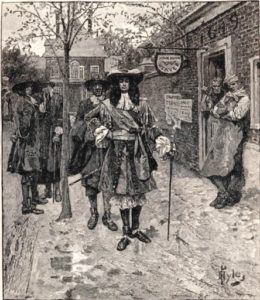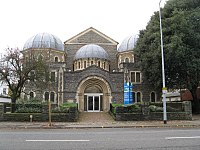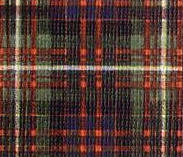Dynasties and Clans of Europe

Author: Robert W. Penry @ 2024
The maps on this page are from World History Encylopedia using the Attribution-noncommerical- Sharealike 4.0 International Deed. Thank you World History Encylopedia, whose help makes this page possible! The dynasty images and comments are from Wikipedia Commons. Thanks Wiki!
A dynasty is defined as a succession of people from the same family who play a prominent role in business, politics, or another field. There were many royal dynasties in Europe. Their immediate relatives were considered to be part of that dynasty.
Do we have dynasties in the United States? Yes, we do. You may belong to one. Occasionally you may get together with other members of your dynasty. This is called a Family Reunion!
Synonyms and connected words for dynasty include clan, bloodline, line, ancestral line, lineage, house, family, empire, sovereignty or ascendancy. If we are talking about a dynasty in Scotland, we normally use clan instead of dynasty.
The boundaries of historic dynasties seldom match today’s country boundaries. It is often hard to even clearly define a dynastic region.
The map of Europe today bears no resemblance to Europe of a thousand years ago. Instead of countries, vast areas of land were ruled over by dynastic families. The Medieval regions of Francia, Neustria, Austrasia, Aquitaine, Almania, and Bavaria were ruled over by the Merovingian Dynasty (The Franks). From the various dynasties, the countries of France, Germany, Italy, Spain, etc. eventually came into existence.
A dynasty had a dominant family but also had many other families of prominence. These were called cadet dynasties. An example is the Hapsburg dynasty. It was in central Europe and was broken up into Austria, Czechia, Slovakia, Hungary, Slovenia and Bosnia. Its cadet branches ruled Peru, Spain and Mexico! Sometimes dynasties overlapped and families intermarried, and new dynasties emerged.
If a female from one dynasty marries into another, there is no fast rule. She could be listed as a member of either dynasty (or both). However, children from the marriage would normally be considered to be the father’s dynasty.
Dynasties of Europe
Houses of the British Empire
Although the various houses (dynasties) were located throughout the world, eventually the head or ruler of each dynasty would sit on the throne of England.

Merovingian Dynasty (France).The Merovingian dynasty was the ruling family of the Franks from the middle of the 5th century until 751. They first appear as “Kings of the Franks” in the Roman army of northern Gaul. By 509 they had united all the Franks and northern Gaulish Romans under their rule. They conquered most of Gaul, defeating the Visigoths and the Burgundians, and also extended their rule into Raetia. In Germania, the Alemanni, Bavarii and Saxons accepted their lordship. The Merovingian realm was the largest and most powerful of the states of western Europe following the fall of the Western Roman Empire.

Carolingian Dynasty (France).The Carolingian dynasty was a Frankish noble family founded by Charles Martel with origins in the 7th century AD. The dynasty consolidated its power in the 8th century becoming the de facto rulers of the Franks as the real powers behind the Merovingian throne. In 751 the Merovingian dynasty which had ruled the Germanic Franks was overthrown with the consent of the Papacy and the aristocracy, and a Carolingian Pepin the Short was crowned King of the Franks. The Carolingian dynasty reached its peak in 800 with the crowning of Charlemagne as the first Emperor of Romans in the West in over three centuries. His death in 814 began an extended period of fragmentation of the Carolingian empire and decline that would eventually lead to the evolution of the Kingdom of France and the Holy Roman Empire.
Capetian Dynasty (France). The House of Capet also known as the House of France, is a dynasty of Frankish origin, founded by Hugh Capet. It is among the largest and oldest royal houses in Europe and the world and consists of Hugh Capet’s male-line descendants. The senior line ruled in France as the House of Capet from the election of Hugh Capet in 987 until the death of Charles IV in 1328. That line was succeeded by cadet branches, the Houses of Valois and then Bourbon, which ruled until the French Revolution. A cadet branch is a line of descent from another line than the senior-most.
Capetian Cadet Branches:
 House of Valois (France).
House of Valois (France).
 House of Bourbon (Spain & Sicily).
House of Bourbon (Spain & Sicily).
 House of Évreux (France).
House of Évreux (France).
 House of Artois (France).
House of Artois (France).
 House of Anjou (France).
House of Anjou (France).
 House of Dreux (France).
House of Dreux (France).
 House of Courtenay. Note: there were two Houses of Courtenay. One was not Capetian.
House of Courtenay. Note: there were two Houses of Courtenay. One was not Capetian.

Bagrationi Dynasty (Georgia).The Bagrationi is a royal dynasty which reigned in Georgia from the Middle Ages until the early 19th century, being among the oldest extant Christian ruling dynasties in the world. The kingdom of Georgia, a country in the Caucasus region of Eurasia and borders the Black Sea.


House of Savoy (Italy). The House of Savoy is a royal family that was established in 1003 in the historical Savoy region. Through gradual expansion, the family grew in power from ruling a small county in the Alps north-west of Italy to absolute rule of the kingdom of Sicily in 1713 to 1720.


House of Liechtenstein (Liechtenstein).The House of Liechtenstein, from which the principality takes its name, is the family which reigns by constitutional, hereditary right over the nation of Liechtenstein. Only dynastic members of the family are eligible to inherit the throne.
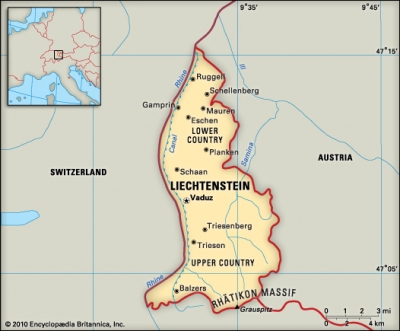

House of Nassau (Germany). The House of Nassau is a diversified aristocratic dynasty in Europe. It is named after the lordship associated with Nassau Castle, located in present-day Nassau, Rhineland-Palatinate, Germany. The current head of the dynasty is the Grand Duke of Luxembourg.The House of Nassau sub-divided into three Cadet Branches:

House of Nassau-WeilburgThe House of Nassau-Weilburg, a branch of the House of Nassau, ruled a division of the County of Nassau, which was a state in what is now Germany, then part of the Holy Roman Empire, from 1344 to 1806. The House has been extinct since 1985 when it was absorbed into the House of Bourbon-Parma.
House of Nassau-Corroy. The house of Nassau-Corroy is a bastard branch of the House of Nassau. Unlike the main branch of the House of Nassau, this bastard branch was faithful to the king of Spain and was Roman Catholic.

House of Orange-Nassau (Netherlands). The House of Orange-Nassau, a branch of the European House of Nassau, has played a central role in the politics and government of the Netherlands and Europe especially since William the Silent organized the Dutch revolt against Spanish rule, which after the Eighty Years’ War led to an independent Dutch state.

Piast Dynasty (Poland).The Piast dynasty was the first historical ruling dynasty of Poland. The first documented Polish monarch was Prince Mieszko I. The Piasts’ royal rule in Poland ended in 1370 with the death of king Casimir III the Great.


House of Braganza (Portugal).The Most Serene House of Braganza, also known as the Brigantine Dynasty, was a dynasty of emperors, kings, princes, and dukes of Portuguese origin which reigned in Europe and the Americas. The House ended with the death of John VI King of Portugal, Brazil and the Algraves in 1922.
MAP OF PORTUGAL LOCATION OF BRAGANZA.
Note that Bragranza also held territories in South Africa and in the Americas. Included were Ceylon, Brazil, Saint Thomas in the West Indies, and Angola. Braganza was involved in trade throughout the world.

House of Romanov (Russia). The House of Romanov was the reigning royal house of Russia from 1613 to 1917. After the murder of Czar Nicholas and his family by the Bolsheviks in 1917, the House has continued in dispute largely due to disagreements in the validity of dynasts’ marriages, thus 1917 is considered the end of the House of Romanov.


House of Osman. Ottoman Dynasty (Turkey). The Ottoman Dynasty was made up of the members of the imperial House of Osman, also known as the Ottomans. According to Ottoman tradition, the family originated from the Kayı tribe branch of the Oghuz Turks, under Osman I in northwestern Anatolia in the district of Bilecik Söğüt. The Empire is considered to have ended in 1922 because of civil conflicts within Turkey. The sultanate was abolished in 1922 and the last sultan left the country that year.


Habsburg Dynasty (Austria). The House of Habsburg and alternatively called the House of Austria, was one of the most influential and distinguished royal houses of Europe. The throne of the Holy Roman Empire was continuously occupied by the Habsburgs from 1438 until their extinction in the male line in 1740. The house also produced emperors and kings of Bohemia, Hungary, Croatia, Galicia, Portugal and Spain with their respective colonies, as well as rulers of several principalities in the Netherlands and Italy. From the 16th century, following the reign of Charles V, the dynasty was split between its Austrian and Spanish branches. Although they ruled distinct territories, they nevertheless maintained close relations and frequently intermarried.
Cadet Branches of the Habsburg Dynasty
Agnatic: (branch through male line only)
Habsburg-Spain (Spain) 1560-1700 (extinct). The Habsburgs sought to consolidate their power by the frequent use of consanguineous marriages. This resulted in a cumulatively deleterious effect on their gene pool. Marriages between first cousins, or between uncle and niece, were commonplace in the family. A study of 3,000 family members over 16 generations by the University of Santiago de Compostela suggests that inbreeding directly led to their extinction.
Habsburg-Laufenburg (Switzerland) 1322-1408 (extinct). The House of Habsburg-Laufenburg was from 1232/34 to 1408 a side line of the Habsburgs , but never gained the importance and power of their relatives.In Switzerland and in today’s South Baden, the counts of Habsburg-Laufenburg acquired a certain importance.
Habsburg-Kyburg (Swabia & Switzerland) 1264-1417 (extinct). During 1180–1250, the counts of Kyburg existed as a separate cadet line of the counts of Dillingen. The county was ruled by Hartmann V, nephew of the last count of Kyburg in the agnatic line, during 1251–1263. It then passed to the House of Habsburg as possession of the counts of Neu-Kyburg (also Kyburg-Burgdorf) after the extinction of the agnatic line of the House of Kyburg, until the extinction of Neu-Kyburg in 1417.
Cognatic: (Branch can be through male or female descendants)

House of Habsburg-Lorraine. (Austria-Hungary).Habsburg-Lorraine inherited the Habsburg Empire, ruling the Austrian Empire and Austria-Hungary until the dissolution of the monarchy in 1918

House of Habsburg-Iturbide (Mexico).The House of Iturbide (Spanish: Casa de Iturbide) is the former Imperial House of Mexico. 1822-1867. It ended when Mexican Emperor Maximillan was deposed and executed on the orders of Benito Juárez who became President of Mexico.
HOUSES OF THE BRITISH EMPIRE
Although the various houses (dynasties) were located throughout the world, eventually the head or ruler of each dynasty would sit on the throne of England.
The house of Godwin (England). The House of Godwin was an Anglo-Saxon (in later generations Anglo-Danish or Anglo-Norse) family, one of the leading noble families in England during the last 50 years before the Norman Conquest. Its most famous member was Harold Godwinson, king of England for nine months in 1066 until killed during Norman invasion under William the Conqueror.



Hanover (Germany & England). Houseof Hanover, whose members are known as Hanoverians, is a German royal house that ruled Hanover, Great Britain, and Ireland at various times during the 17th through 20th centuries. The house originated in 1635 as a cadet branch of the House of Brunswick-Lüneburg, growing in prestige until Hanover became an Electorate in 1692. George I became the first Hanoverian monarch of Great Britain and Ireland in 1714. The house continued until the death of Queen Victoria in 1901 when the ruling line changed to the House of Saxe-Coburg and Gotha.


House of Saxe-Coburg and Gotha (Germany & England).The House of Saxe-Coburg and Gotha is a German dynasty that ruled the duchy of Saxe-Coburg and Gotha, which was one of the Ernestine duchies. It is a cadet branch of the Saxon House of Wettin. it has been the royal house of several European monarchies. Agnatic branches currently reign in Belgium through the descendants of Leopold I and in the United Kingdom and the other Commonwealth realms through the descendants of Prince Albert. Due to anti-German sentiment in the United Kingdom during World War I, George V changed the name of his branch from “Saxe-Coburg and Gotha” to “Windsor”



Windsor is the reigning royal house of the United Kingdom and the other commonwealth realms. The dynasty is originally of German paternal descent and was a branch of the House of Saxe-Coburg and Gotha, itself derived from the Housew of Wetlin, which succeeded the House of Hanover to the British monarchy following the death of Queen Victoria, wife of Albert, Prince Consort. The name was changed from Saxe-Coburg and Gotha to the English Windsor (from Windsor Castle) in 1917 because of anti-German sentiment during World War I.


House of Plantagenet (France and England). The House of Plantagenet was a royal house which originated from the lands of Anjou in France. The name Plantagenet is used by modern historians to identify four distinct royal houses, the Angevins, who were also counts of Anjou, the main body of the Plantagenets following the loss of Anjou, and the Plantagenets’ two cadet brances, the Houses of Lancaster and York. The family held the English throne from 1154, with the accession of Henry II, until 1485, when Richard III died in battle.



House of Knytlings (aka House of Canute, Denmark or Jelling Dynsasty)
DanishHouse of Knýtlinga English royal house in Middle Age Scandanavia and England. Its famous king was Cnut the Great. Other notable member were Cnut’s father Sweyn Forkbeard, grandfather Harald Bluetooth and songs Harthacnut, Harold Harefoot and Svein Knutsson.
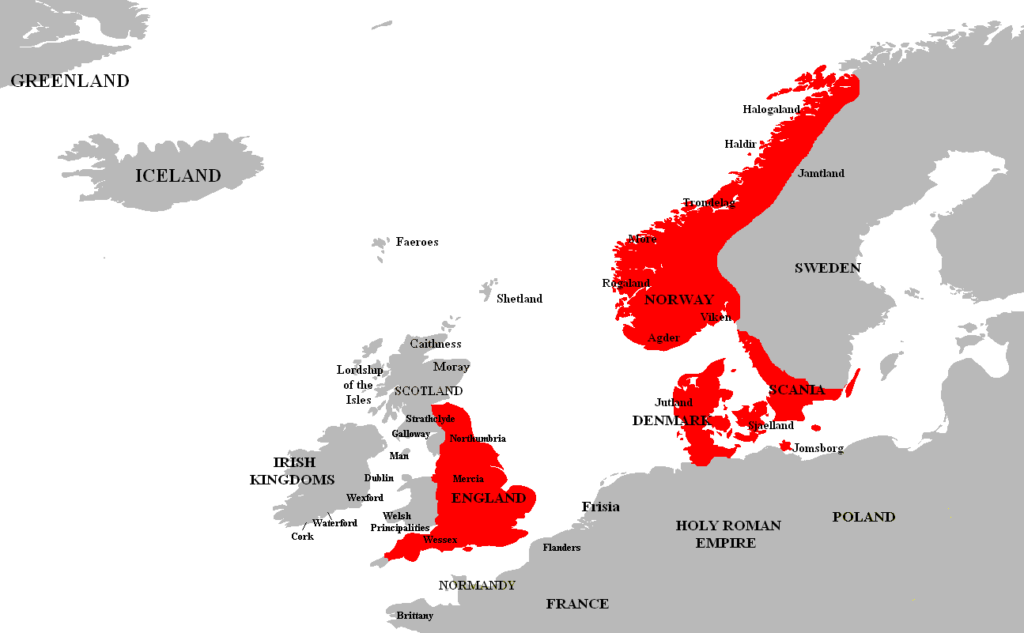
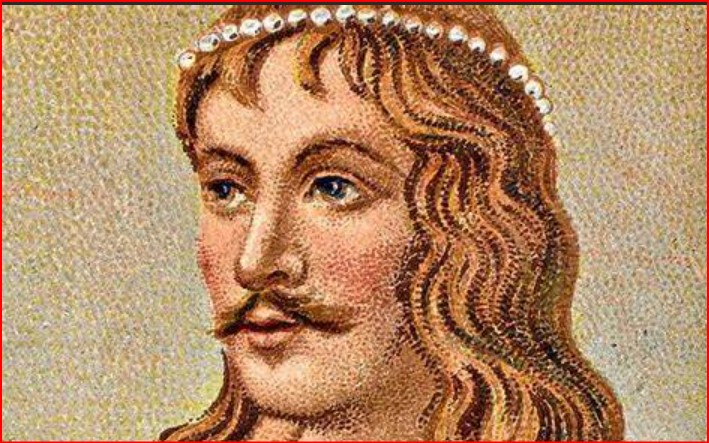





Images above: 1st is House of Angevin, the next is the 1st and 2nd Houses of Lancaster, the third is the House York, the 4th are the Red Rose of Lancaster and the White Rose of York, the rose emblems were displayed, with both housed claiming the throne of England through descent from Edward III.
Cadet Branches
Anjevins (France & UK). The Angevins (“from Anjou”) were a royal house of French origin that ruled England in the 12th and early 13th centuries; its monarchs were Henry II, Richard I and John. In the 10 years from 1144, two successive counts of Anjou in France, Geoffrey and his son, the future Henry II, won control of a vast assemblage of lands in western Europe that would last for 80 years and would retrospectively be referred to as the Angevin Empire. As a political entity this was structurally different from the preceding Norman and subsequent Plantagenet realms. Geoffrey became Duke of Normandy in 1144 and died in 1151. In 1152 his heir, Henry, added Aquitaine by virtue of his marriage to Eleanor of Aquitaine. Henry also inherited the claim of his mother, Empress Matilda, the daughter of King Henry I, to the English throne, to which he succeeded in 1154 following the death of King Stephen
House of Lancaster (England). (1267-1361) There were two Houses of Lancaster – two cadet branches of the royal House of Plantagenet. The Houses became extinct in the male line upon the murder in the Tower of London of Henry VI, following the battlefield execution of his son Edward of Westminster, Prince of Wales, by supporters of the House of York in 1471.
o First – The first house of Lancaster was created when Henry III of England created the Earldom of Lancaster—from which the house was named.
o Second –The second house of Lancaster was descended from John of Gaunt, who married the heiress of the first house, Blanche of Lancaster.
House ofYork (England).The House of York was a cadet branch of the English royal House of Plantagenet. Three of its members became kings of England in the late 15th century. The House of York was descended in the male line from Edmund of Langley, 1st Duke of York. The reign of this dynasty ended with the death of Richard III of England at the Battle of Bosworth Field in 1485. It became extinct in the male line with the death of Edward Plantagenet, 17th Earl of Warwick, in 1499.
House ofTudor (England). The House of Tudor was an English royal house of Welsh origin, descended in the female line from the Tudors of Penmynydd. Tudor monarchs ruled the Kingdom of England and its realms, including their ancestral Wales and the Lordship of Ireland (later the Kingdom of Ireland) from 1485 until 1603,
In Wales, a royal house descended from the Tudors of Penmynydd. During the War of Roses, Henry Tudor defeated Richard III at the battle of Bosworth and took the throne as Henry VII. The significance to Wales comes with his son, Henry VIII.
Henry VIII was born in 1491 and died in 1547. He did away with the laws of Hywel Dda, and only English law remained. All legal matters had to be done in the English language. His actions led to diminishing the Welsh language which almost ended with the Welsh language becoming extinct. The reason for the legal change, was that the Welsh counties in the border region (the Marches) were troublesome for his father Henry VII. Henry felt that putting all courts under English jurisdiction would help in governing Wales. At first the Welsh welccomed Henry VII as one of their own. He was a descendent of Glyn Dwr. After all, the Tudors were Welsh, you know! This was the real end of any chance of Welsh independence. From this point forward, Wales would be considered as a region of England, a part of the Commonwealth.
Henry VIII, broke away from the Catholic Church and formed the Church of England, a protestant church. This opened the gate to eventual nonconformist religions in Wales. This is highly significant in history, because nonconformity established the religious culture in Wales that exists to this day. The music, the pageantry, the very fabric of Welsh life is ingrained in Henry’s break with Rome.
Henry’s daughter, Elizabeth I brought Catholicism back. This pleased the Welsh who had been largely Catholic. This change was not to last. When Oliver Cromwell and parliament eliminated the king, Catholics were persecuted in Wales. The Puritan movement had begun. Eventually, this was replaced by a Calvinist Methodist movement.
The Protestant Reformation
In the 16th-century, a movement began that was the result of changes in ideas. Cultures and politics began to change. Intellectuals began to question values and religion. The religion of Europe was Roman Catholic. These intellectuals, often religious leaders such as Martin Luther, John Calvin, and John Penry started to question papal authority. Henry VIII took advantage of the movement, which allowed him to break with Rome and Pope.
This movement was not peaceful. It caused wars and persecution. In areas that still adhered to Catholicism, it even necessary to protect the Catholic clergy. In my own ancestral home in Wales, we had a Priests Hiding Hole. A hidden room where the local Priest took shelter from Cromwell’s army. The interesting fact is that my ancestor, Hugh Penry of Llangamarch, who hid the priest was the local Anglican Vicar of Devynock!
On the European continent, there was a backlash and Catholics often put Protestants to death in a period called the Counter-Reformation. The acceptance of both Catholics and Protestants coexisting took many, many years with events such as the Thirty Year’s War and the Treaty of Augsburg which allowed Lutherans and Catholics to coexist in Germany. This difference is often highly political and still exists in Ireland. The “Troubles” in Northern Ireland lasted from the 1960s until the Good Friday agreement of 1998! It was a period of murders, bombings, and riots. Even today, Catholics usually stay in their homes on Ulster Day.
This Protestant/Catholic antagonism was evident when I lived in Scotland in the 1960s. This cultural warfare even took place during football games. The stadium in Glasgow separated the fans by a barbed-wire fence. The Rangers were Protestant, the Celtic were Catholic. A popular folk song of the period had these lyrics “So don’t wear a green scarf in Brigton, or a blue scarf in Cumberland Street, unless your a heavy-weight champion or a hell of quick on your feet!”
I had a personal experience with the rivalry. I had a Celtic band in Edinburgh in the 1960’s “The Gatekeepers”. We had finished our gig and it was late, nearly midnight. I boarded a double-decker bus to home in Kirknewton, about 8 miles from Edinburgh. There had been a Ranger and Celtic football game that day in Edinburgh. The bus had about 20 Celtic fans heading toward Glasgow. They were in very “high” spirits, singing and having fun. About six miles from Kirknewton, we stopped and a group of Ranger fans came aboard. I looked at the conductress, she looked at me, and we both knew what was about to happen. We both stepped off the bus in the middle of the countryside and began walking. As the bus disappeared into the distance, we could see it swerving and rocking! About two files further down the road, we came across the bus and several Black Maria’s (police vans), hauling our rioting footballers away. We got back on the bus and continued our journey
Religion in Wales
Wales was much more liberal than England in religious tolerance. The Welsh have a history of freethinking and nonconformity.
The following is an excerpt from the Wikipedia article, Religion In Wales
Nonconformity, membership and revival
Nonconformity grew rapidly and came to dominate the religious life of Wales from the eighteenth to the twentieth centuries. The Welsh Methodist revival of the 18th century was one of the most significant religious and social movements in the history of Wales. The revival began within the Church of England in Wales and at the beginning remained as a group within it, but the Welsh revival differed from the Methodist revival in England in that its theology was Calvinist rather than Arminian. Welsh Methodists gradually built up their own networks, structures, and even meeting houses (or chapels), which led eventually to the secession of 1811 and the formal establishment of the Calvinistic Methodist Presbyterian church of Wales in 1823. Emotionalism had free rein; in contrast to Scotland with its four universities, good schools, and a strong theological tradition, Wales had no universities and widespread illiteracy.
The Welsh Methodist revival also had an influence on the older nonconformist churches, or dissenters – the Baptists and the Congregationalists – who in turn also experienced growth and renewal. As a result, by the middle of the nineteenth century, Wales was predominantly a nonconformist country.
Statistics of membership between 1680 and 1840 demonstrate that the established Church of England lost one-fifth of its membership. In addition, an ever-increasing number of nominal Anglicans also ceasing to practise. Nonconformity more than quadrupled, mainly from 1760 and especially after 1800. In 1800 there were twice as many Anglican churches as Nonconformist chapels; in 1850, chapels outnumbered churches by a ratio of 5 to 2. Roman Catholicism kept pace with demographic growth, but, even reinforced by Irish immigration, remained a limited force in 1840. Judaism and overt irreligion were both rare.
In 1910, the nonconformist bodies numbered 550,000 members, as against 193,000 in the established Church of England. Nonconformists, led by Liberal David Lloyd George, increasingly controlled the politics of Wales, although the elite sectors were still dominated by the Anglicans.The 1904-1905 Welsh Revival was the largest full scale Christian Revival of Wales of the 20th century. At least 100,000 people became Christians during the 1904–1905 revival. Even so, it did not put a stop to the gradual decline of Christianity in Wales, only holding back slightly. By 2011, South Wales and especially settlements in the former coalfield area showed the highest proprortion of no religion in the country, rising in places to over 50%.
Disestablishment – creation of the Church in Wales:
In reaction to the rise of nonconformity, some Anglicans came to recognise the weaknesses of the established church and its failure to counteract the popular aspects of nonconformity. The rigidity of the parish system and the distance between churches were quoted as examples of the failure of the church to adapt. The Welsh Church Act 1914 provided for the separation of the four dioceses of the Church of England located in Wales (known collectively as the Church in Wales) from the rest of the Church, and for the simultaneous disestablishment of the Church. The Act came into operation in 1920. Since then there has been no established church in Wales.
Present-day Roman Catholicism
Catholics are served by the Ecclesiastical Province of Cardiff, which exists out of the Archdiocese of Cardiff, the Diocese of Menevia and the Diocese of Wrexham. The bishops of these dioceses are part of the Catholic Bishops’ Conference of England and Wales.
Sabbatarianism[edit]
The Sabbatarian temperance movement was strong among the Welsh in the Victorian period and the early twentieth century, the sale of alcohol being prohibited on Sundays in Wales by the Sunday Closing Act of 1881. This remained in parts of Wales until 1996.
A monastic community was founded by Saint David at what is now St David’s. The present building of St David’s Cathedral was started in 1181.
Saint David is the patron saint of Wales
Islam:
The largest non-Christian faith in Wales is Islam, with about 46,000 adherents in 2011. Most Muslims live in Cardiff (23,656 in 2011, 6.8% of the population), but there are also significant numbers in Newport (6,859 in 2011) and Swansea (5,415 in 2011).
There has been a Somali and Yemeni Islamic community in Cardiff since the mid-1800s, founded by seafarers to Cardiff Docks
Judaism:
Old building of the Cardiff United Synagogue.
Judaism has quite a long history in Wales, with a Jewish community recorded in Swansea from about 1730. In August 1911, in a period of public disorder and industrial disputes, Jewish shops across the South Wales coalfield were damaged by mobs. Since that time the Jewish population of that area, which reached a peak of 4,000–5,000 in 1913, has declined. In 2011 there were a total of 2,064 Jewish adherents in Wales, including 802 in Cardiff.
Hinduism and Buddhism each have about 10,000 adherents in Wales, with the rural county of Ceredigion being the centre of Welsh Buddhism. Govinda‘s temple & restaurant, run by the Hare Krishnas in Swansea, is a focal point for many Welsh Hindus. There are about 3,000 Sikhs in Wales, with the first purpose-built gurdwara opened in the Riverside area of Cardiff in 1989. In 2011 some 13,000 people classified themselves as following Other religion including a reconstructed form of Druidism, which was the pre-Abrahamic religion of Wales (not to be confused with the Druids of the Gorsedd at the National Eisteddfod of Wales).
The Church of Jesus Christ of Latter-day Saints in Wales has had a significant impact in the History Wales. Thousands of Welsh families immigrated to America forming communities in Vermont, Ohio, Pennsylvania, and Up-State New York beginning in 1630. After 1830 Many Welsh descendants joined the LDS church and migrated to the Western United States. During the 1840’s over 5,000 Welsh joined the church and immigrated to the United States. These Welsh significantly affected the culture of the Western United States, especially Utah and Idaho. the Mormon Tabernacle Choir started as a Welsh Choir in the Salt Lake Valley and the choir today has many Welsh descendants. The Welsh brought their musical heritage to America and greatly influenced the singing in the Church of Jesus Christ of Latter-Day Saints. Some of the hymns are Welsh. Welsh Latter-day Saints also immigrated to Argentina, New Zealand, and Australia.
In those locations, they also formed communities such as Trelew and Trevelin in Argentin.
SCOTLAND AND IRELAND
Scottish and Irish dynasties differ in that they are usually not extinct. Besides being a dynasty, they are usually a clan also and even though they may no longer hold royal titles or a crown, they often have Clan Chiefs. Although a dynasty can be a clan, in most cases clans are not defined as dynasties even though they are dynastic in nature.. A clan is usually composed of descendants of a single man, usually not a king, where most dynasties originate with a ruling monarch.
House of Alpin also known as the Alpínid dynasty, Clann Chináeda, and Clann Chinaeda meic Ailpín, was the kin-group which ruled in Pictland, possibly Dál Riata, and then the kingdom of Alba from the advent of Kenneth MacAlpin in the 840s until the death of Malcolm II in 1034. Wikipedia Named after King Alpin II of Dalrida The House of Alpin brought together the crowns of the Scots and the Picts – King Alpin had previously been called ‘King of the Picts and Scots’, as well as King of Dál Riata (Dalriada). He reigned from around 833-840. King Alpin II was the first tribal leader on record and held land in Kintyre, and in Northern Ireland. From evidence which exists he appears to have died in a battle against the Picts in Galloway. Legend says he was married to a Pict princess which allowed his son Kenneth to unite the the Kingdoms, that of the Pictish and Celtic thrones. With the Picts succession went through the female line.
House of Dunkeld is a historiographical and genealogical construct to illustrate the clear succession of Scottish Kings from 1034 to 1040 and from 1058 to 1286. It is also referred as the Canmores and MacMalcom.
House of Sverre was a Norwegian dynasty that rules in Scotland for short time from 1286 to 1290.
House of Balliol (de Bailleul) was a family from village of Bailleul in Picardy who held English estates. One family member, John Balliol was named King of Scotland following extinction of the Dunkeld line. He was deposed which led to the First War of Scottish Independence. His son Edward briefly controlled the Scottish throne during the Second War of Scottish Indpendence. Since he had no children, his line went extinct.
House of Bruce was a lowland Scottish Clan and was a royal house in the 14th century with two kings of Scotland, Robert the Bruce and David II of Scotland. The family originated in Normandy, and descended from Robert de Brus, 1st Lord of Annandale. After Balliol, Scotland had no monarch. Robert the Bruce rebelled against King Edward I and joined a Scottish revolt. He then succeeded William Wallace as a Guardian of Scotland. He killed his rival John Comyn and was crowned King of Scotland in 1306. He was forced by the English to retreat to Argyll. Through a series of battles and intrigue his family stayed in power until succession passed to House of Stewart (Stuart). the Bruce family continued as Earls of Elgin.
House of Stuart (Scotland). (1150-1807)The House of Stuart, originally Stewart, was a European royal house of Scotland with Breton origin. They had held the office of High Steward of Scotland since Walter FitzAlan in around 1150. The royal Stewart line was founded by Robert II whose descendants were kings and queens of Scotland from 1371 until the union with England in 1707. Mary, Queen of Scots was brought up in France where she adopted the French spelling of the name Stuart. The family continues as Clans Stewart and Stuart.
IRELAND








